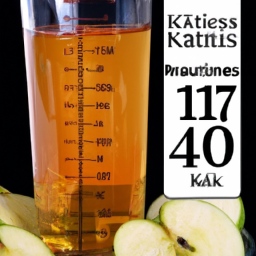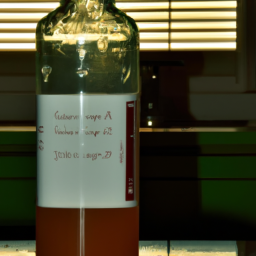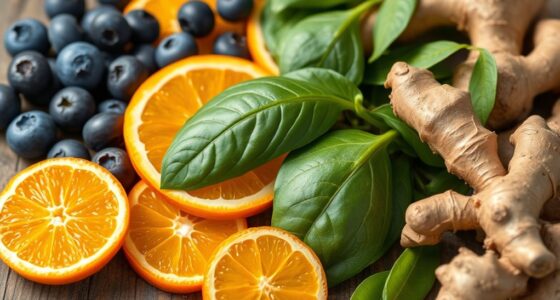For a while now, I have been a fan of acai bowls, and Jamba Juice is one of my go-to places to get one. Not only are they delicious, but they also come with numerous health benefits.
However, I know that cost can be a concern for some, especially when it comes to specialty items like acai bowls. So, I decided to do some research and find out just how much an acai bowl at Jamba Juice will set you back.
After browsing their menu and checking out the prices, I can confidently say that Jamba Juice’s acai bowls aren’t breaking the bank. While the cost does vary depending on the specific bowl and location, they typically range from $6 to $8.
This may seem a bit expensive for a small bowl of fruit, but when you take into account the high-quality ingredients and nutritional value, it’s a pretty reasonable price.
Key Takeaways
- The cost of Jamba Juice’s acai bowls ranges from $6 to $8.
- Jamba Juice’s acai bowls are made with high-quality ingredients and are packed with nutrients.
- Jamba Juice also offers alternative fruit options to customize your bowl.
- Acai bowls are a bit expensive but are reasonable considering the high-quality ingredients and nutritional value.
Overview of Acai Bowls
If you’re not familiar, acai bowls are a popular and delicious breakfast or snack option. They consist of acai berry puree blended with other fruits and topped with various toppings like granola, coconut, and honey.
Originating from Brazil, the acai fruit is known for its high antioxidant content and has been consumed for centuries by indigenous tribes. It wasn’t until the 1990s that acai was introduced to the rest of the world, and since then, it has become a staple in the health food industry.
Acai bowls have gained immense popularity in recent years. Many health-conscious individuals incorporate them into their diets. They have even made their way into popular culture, with celebrities like Gisele Bundchen and Oprah Winfrey endorsing them.
Acai bowls are not only tasty, but they are also packed with nutrients, making them a great option for a quick and healthy meal. Now, let’s take a look at Jamba Juice’s acai bowl options.
Jamba Juice’s Acai Bowl Options
As a big fan of acai bowls, I’ve tried a variety of options from different places. However, Jamba Juice’s acai bowls stand out for their unique flavor combinations and fresh ingredients.
The Acai Primo Bowl is my personal favorite, with its blend of acai, bananas, strawberries, blueberries, and a drizzle of honey. The PB Chocolate Love Bowl is perfect for those who love the combination of peanut butter and chocolate.
Other options include the Island Pitaya Bowl, the Vanilla Blue Sky Bowl, and the Chunky Strawberry Bowl, all of which are worth trying.
Acai Primo Bowl
Hey, you won’t believe the burst of energy you’ll get from Jamba Juice’s Acai Primo Bowl, and for only $8.49, it’s a steal! This bowl is packed with all the nutrients you need to start your day off right. The base of the bowl is made of pureed acai berries, which are high in antioxidants and essential fatty acids. On top of the acai base, there are bananas, strawberries, blueberries, and granola. This combination provides a balance of sweet and tart flavors, along with a satisfying crunch.
To give you a better idea of the nutrition and ingredients in the Acai Primo Bowl, here’s a table that breaks down the toppings and their benefits:
| Toppings | Benefits |
|---|---|
| Acai | High in antioxidants and essential fatty acids |
| Bananas | High in potassium and fiber |
| Strawberries | High in vitamin C and antioxidants |
| Blueberries | High in antioxidants and fiber |
| Granola | Provides energy and fiber |
As you can see, the Acai Primo Bowl is not only delicious but also nutritious. It’s the perfect breakfast or snack option for anyone who wants to fuel their body with healthy ingredients. But, if you’re looking for something with a little more indulgence, let me tell you about Jamba Juice’s PB Chocolate Love Bowl.
PB Chocolate Love Bowl
Indulge in the decadent flavors of the PB Chocolate Love Bowl from Jamba Juice, a creamy blend of peanut butter, chocolate, and bananas that will satisfy any sweet tooth. The base is made with a blend of acai, banana, and nonfat Greek yogurt, which gives it a smooth and creamy texture.
The peanut butter and chocolate flavors are not overpowering and are perfectly balanced with the sweetness of the bananas. It’s like having a dessert for breakfast! If you’re looking to switch up the ingredients, there are some possible substitutions you can make to customize your bowl.
You can swap the peanut butter for almond butter or any nut butter of your choice. You can also add some extra toppings such as granola, sliced almonds, or shredded coconut. The possibilities are endless, and you can create your own unique flavor profile that suits your taste buds.
Moving on to the next section, let’s talk about the Island Pitaya Bowl.
Island Pitaya Bowl
If you’re in the mood for a refreshing and tropical treat, you’ll love the Island Pitaya Bowl from Jamba Juice. This bowl is made with pitaya, also known as dragon fruit, which is known for its bright pink color and its sweet and slightly tart flavor. It’s blended with strawberries, pineapple, and coconut water to create a creamy and delicious base.
Island pitaya bowls are often compared to acai bowls, which are made with acai berries from the Amazon rainforest. While both bowls are packed with antioxidants and nutrients, the island pitaya bowl has a milder flavor and a lighter texture compared to the thicker and richer acai bowl.
If you’re looking to make an acai bowl at home, you can blend frozen acai packets with your choice of fruit and liquid, and top it with granola, fresh fruit, and other toppings for a delicious and nutritious breakfast or snack.
Now, let’s move on to the next mouth-watering bowl on the Jamba Juice menu – the Vanilla Blue Sky Bowl.
Vanilla Blue Sky Bowl
As much as I enjoyed the Island Pitaya Bowl, I couldn’t resist trying out another flavor option at Jamba Juice. This time, I opted for the Vanilla Blue Sky Bowl.
As I took my first bite, I was immediately hit with the creamy sweetness of the vanilla yogurt. The blueberries and bananas added a nice fruity flavor that complemented the vanilla perfectly.
If you’re looking for a sweet and satisfying breakfast or snack, the Vanilla Blue Sky Bowl is definitely worth a try. Here are three reasons why you’ll love it:
- The vanilla yogurt is creamy and sweet without being overpowering.
- The blueberries and bananas add a nice burst of fruity flavor.
- The granola and honey toppings add the perfect amount of crunch and sweetness.
Overall, I would highly recommend giving the Vanilla Blue Sky Bowl a try. It’s a delicious and satisfying option that’s perfect for any time of day. And if you’re looking for even more flavor options, Jamba Juice has plenty to choose from.
Speaking of flavor options, up next is the chunky strawberry bowl. Let’s see how it stacks up against the other bowls at Jamba Juice.
Chunky Strawberry Bowl
You’ll love the Chunky Strawberry Bowl, with its blend of strawberries, bananas, and almond milk topped with granola and honey. It’s a refreshing and satisfying snack that is perfect for any time of the day. The sweetness of the strawberries and bananas combined with the crunch of the granola creates a perfect texture balance that will satisfy all texture preferences.
If strawberries aren’t your thing, Jamba Juice offers alternative fruit options to customize your bowl to your liking. You can swap out the strawberries for blueberries or raspberries, or even add in some mango for a tropical twist. Regardless of your choice, the Chunky Strawberry Bowl is a delicious and nutritious option that will leave you feeling satisfied.
Moving on to the next section, the Berry Bowl is another great option for those who are looking for a fruity and refreshing snack.
Berry Bowl
Get ready to indulge in a mouthwatering blend of mixed berries, almond milk, and honey with the Berry Bowl from Jamba Juice. This refreshing and nutritious bowl is perfect for those who crave something sweet and healthy.
Here are three variations of berry bowls that you can try:
-
Mixed Berry Bowl – This classic bowl features a blend of strawberries, blueberries, raspberries, and blackberries, topped with granola and honey.
-
Acai Berry Bowl – For those who love acai, this bowl is a must-try. It includes acai, mixed berries, and almond milk, topped with granola, honey, and sliced banana.
-
Tropical Berry Bowl – This bowl is perfect for those who love a tropical twist. It features a blend of pineapple, mango, and mixed berries, topped with granola and honey.
When it comes to the best acai bowl toppings, there are endless possibilities. Some popular options include sliced banana, granola, coconut flakes, chia seeds, and honey. You can also add other fruits such as strawberries, blueberries, or raspberries to make your bowl even more colorful and delicious.
Now, let’s move on to the price range of Jamba Juice’s acai bowls.
Price Range of Jamba Juice’s Acai Bowls
Jamba Juice’s acai bowls range in price, starting at around $6. The cost varies depending on the size and specific ingredients included in the bowl.
For example, the classic Acai Primo Bowl comes with acai, soymilk, strawberries, and bananas, and is priced at around $8. The Acai Berry Bowl, which includes acai, blueberries, strawberries, and coconut, is priced at around $9.50.
When comparing the cost of Jamba Juice’s acai bowls to other similar options, such as Smoothie King or Juice It Up, the prices are generally on par. However, Jamba Juice’s bowls tend to have a slightly larger portion size and more diverse ingredient options.
Overall, the price range of Jamba Juice’s acai bowls is reasonable and competitive within the market.
Moving onto the next section, let’s take a look at what’s included in each acai bowl.
What’s Included in Each Acai Bowl
When ordering, you can expect a variety of nutritious fruits and toppings in each acai bowl, such as crunchy granola and sweet honey, which will leave you feeling satisfied and energized. The acai bowls at Jamba Juice come with a range of toppings that make each bowl unique and delicious.
Here are just a few examples:
-
Fresh Fruit: Each acai bowl is topped with a variety of fresh fruits, such as strawberries, blueberries, and banana slices. These fruits not only add flavor and texture to the bowls, but they also provide important vitamins and minerals.
-
Crunchy Granola: The addition of granola adds a satisfying crunch to the bowl and also provides a good source of fiber and protein.
-
Nut Butter: Many acai bowls at Jamba Juice come with a dollop of nut butter, such as almond or peanut butter. These butters add a creamy texture to the bowl, as well as healthy fats and protein.
Did you know that adding acai to your diet may help reduce inflammation and improve heart health? With so many nutritious toppings, the acai bowls at Jamba Juice are not only delicious but also provide important health benefits. In the next section, we’ll explore the nutritional benefits of acai bowls in more detail.
Nutritional Benefits of Acai Bowls
Indulging in an acai bowl is a delicious and nutritious way to boost your health, as these bowls are packed with antioxidants, fiber, and healthy fats. Not only are acai bowls tasty, but they also offer a variety of health benefits. For example, acai berries contain high levels of antioxidants, which can help protect your body against damage from free radicals and reduce your risk of chronic diseases such as cancer, diabetes, and heart disease. Additionally, acai bowls are high in fiber, which can help keep you feeling full and satisfied, aid in digestion, and promote regularity.
To give you an idea of the nutritional value of an acai bowl, here’s a breakdown of a typical serving size (usually around 16 ounces):
| Nutrient | Amount per serving |
|---|---|
| Calories | 250-400 |
| Total Fat | 8-20g |
| Saturated Fat | 1-5g |
| Cholesterol | 0mg |
| Sodium | 30-60mg |
Overall, indulging in an acai bowl is a great way to boost your health and satisfy your cravings for something sweet and filling. In the next section, we’ll explore how to customize your acai bowl to make it truly your own.
How to Customize Your Acai Bowl
Customizing your acai bowl allows you to tailor it to your taste preferences and nutritional needs, making it a truly personalized and satisfying meal. At Jamba Juice, there are a variety of customization options available to make your acai bowl just the way you like it.
Here are some popular toppings to consider:
- Fresh fruit: Top your acai bowl with sliced strawberries, blueberries, bananas, or any other fruit of your choice for added sweetness and texture.
- Granola: Add a crunchy element to your bowl by sprinkling granola on top. Jamba Juice offers both regular and gluten-free granola options.
- Nut butters: For a boost of protein and healthy fats, drizzle almond or peanut butter on top of your acai bowl.
- Coconut flakes: Add a tropical twist to your bowl by sprinkling coconut flakes on top.
- Chia seeds: Chia seeds are a great source of fiber and omega-3 fatty acids. They also add a fun texture to your acai bowl.
By customizing your acai bowl at Jamba Juice, you can create a delicious and nutritious meal that fits your individual tastes and needs. If you’re looking for other menu items at Jamba Juice, there are plenty of options to choose from.
Other Menu Items at Jamba Juice
Now that you know how to customize your acai bowl at Jamba Juice, let me tell you about some of their other menu items.
They offer a variety of smoothie flavors, from classic favorites like Strawberry Banana to more unique options like Green Fusion. They also have breakfast options like oatmeal and breakfast sandwiches, perfect for a quick and easy meal on the go.
If you’re looking for a light snack, Jamba Juice also offers fruit cups and yogurt bowls. And for a little indulgence, try their baked goods like muffins and croissants. Whatever you’re in the mood for, Jamba Juice has something to satisfy your cravings.
Now, if you’re a regular at Jamba Juice, you’ll definitely want to know about their loyalty program.
Jamba Juice’s Loyalty Program
Jamba Juice’s Juicy Rewards loyalty program is an excellent way for customers to earn loyalty perks and receive discounts on future purchases. By signing up for the rewards program, customers can earn points for every purchase they make at Jamba Juice. These points can then be redeemed for discounts on future purchases, which can save customers a lot of money in the long run.
In addition to the point system, there are also other membership benefits available through the Juicy Rewards program. For example, members can receive exclusive promotions and offers, such as free samples and early access to new products. Additionally, members can earn bonus points by referring friends to the program.
Overall, the Juicy Rewards program is an excellent way to save money and get more out of your Jamba Juice purchases.
If you’re interested in trying out Jamba Juice and taking advantage of the Juicy Rewards program, there are many locations of Jamba Juice across the United States. Whether you’re in a major city or a small town, chances are there’s a Jamba Juice location near you. So why not sign up for the rewards program and start earning points today?
Locations of Jamba Juice
If you’re craving a healthy smoothie or snack, you can easily find a nearby Jamba Juice location. With over 800 locations across the United States, Jamba Juice is one of the most popular spots for people who want to enjoy a refreshing drink or a tasty snack.
Whether you’re in the mood for a classic smoothie like the Strawberry Wild or a more adventurous option like the Acai Super Antioxidant, there’s a Jamba Juice location near you that can satisfy your cravings.
To help you find the nearest Jamba Juice location, here are four facts that you might find interesting:
-
Jamba Juice locations are typically open seven days a week, making it easy to stop by for a quick snack or drink no matter what your schedule looks like.
-
Some Jamba Juice locations have extended hours of operation, staying open later than other spots in the area.
-
If you’re traveling, you can use the Jamba Juice website to find a location near you no matter where you are in the United States.
-
Jamba Juice locations often offer special deals and discounts to customers who sign up for the company’s loyalty program, so it’s worth checking out if you’re a regular visitor.
Frequently Asked Questions
Are there any seasonal or limited-time acai bowl options at Jamba Juice?
Although Jamba Juice’s classic acai bowl is delicious, seasonal variations add excitement. From pumpkin spice to berry blends, the acai bowl ingredients are always fresh and flavorful.
Can I order an acai bowl online for pickup or delivery?
I checked Jamba Juice’s website and found that you can order an acai bowl online for pickup or delivery. The ordering options include customizing your bowl and selecting a pickup or delivery time. There doesn’t seem to be a minimum order requirement.
What are some popular toppings or add-ons for Jamba Juice’s acai bowls?
When it comes to Jamba Juice’s acai bowls, popular toppings include granola, fresh fruit, and honey. Flavor combinations vary, but often include banana and peanut butter. Acai bowls are packed with antioxidants and other nutritional benefits.
Are there any vegan or gluten-free acai bowl options at Jamba Juice?
As a Jamba Juice employee, I can tell you that we offer both vegan and gluten-free Acai Bowls. Our vegan option includes almond milk and mixed berries, while our gluten-free option uses gluten-free granola.
Does Jamba Juice offer any discounts or promotions specifically for their acai bowls?
Score a sweet deal on Jamba Juice’s delicious acai bowls with their loyalty program. Members receive exclusive discount options and promotions to enjoy their favorite treat at a fraction of the cost.
Conclusion
Well, turns out my curiosity about the price of Jamba Juice’s Acai Bowls wasn’t in vain.
After some research, I discovered that the price range of their Acai Bowls is between $7.49 and $8.99, depending on the size and toppings.
I mean, I could buy a whole bag of frozen acai and make several bowls at home for that price! But, in all seriousness, Jamba Juice’s Acai Bowls do offer some nutritional benefits, such as antioxidants and fiber.
And, if you’re feeling fancy, you can customize your bowl with various toppings like granola, honey, and fresh fruit.
Overall, while the price may be a bit steep, it’s always nice to treat yourself to a tasty and healthy snack once in a while. Or, you know, just make your own at home.
Ilana has been a vegan for over 10 years. She originally made the switch for health reasons, but soon found herself becoming more and more passionate about the ethical and environmental implications of a vegan lifestyle. Ilana is the author of The Graceful Kitchen, a blog all about veganism. She loves to cook up delicious and nutritious vegan meals, and share her recipes with others who are interested in leading a cruelty-free life. Ilana is also a strong advocate for using whole foods as the foundation of a healthy diet, and believes that going vegan is one of the best ways to achieve this.










